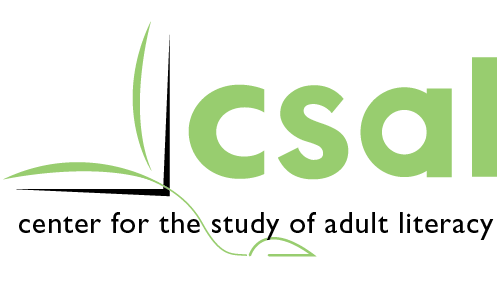Year Three Summary
Every year, nearly 3 million Americans enroll in adult literacy programs to improve their basic skills and some estimates suggest that the need is even greater. Adults in these programs want to increase their literacy skills to improve aspects of their work, family, social, and civic lives. However, we do not completely understand their underlying reading-related strengths and weaknesses, nor do we know the best curricula and teaching approaches to help them reach their reading goals. The focus of our center is to address these areas by attending to the following goals: 1) To collect data on the underlying cognitive and motivational processes that contribute to or impede the reading development of adults who read between the 3.0 and 7.9 grade equivalency levels; 2) To develop and evaluate a multiple component reading intervention for adults who read between the 3.0 and 7.9 grade equivalency levels; 3) To design and collect data from supplemental studies that are aligned with the overall goals of CSAL and are relevant to significant issues in adult education; 4) To engage in national leadership activities that serve the needs of adult education researchers, policymakers, practitioners, and stakeholders; and 5) To disseminate findings of this work.
This report covers our activities from June 1, 2014 through May 31, 2015. During this time period, we engaged in the following activities: a) Phase 1 Testing, b) Designing the intervention, c) Preparing for feasibility studies, d) Implementing feasibility studies, e) Conducting supplemental and additional studies, and f) Performing other center activities.
During this third year, we finished Phase 1 testing data collection, resulting in 558 participants enrolled, of which 500 completed the entire testing battery. Preliminary analysis of 383 of these participants indicate that the majority of our participants are female and native speakers of English. In addition, of the 383 respondents, the mean age was 37 years (SD = 15 years), with the age range spanning from 16 to 71 years old. A cursory look at their mean performance indicates that they are deficient in all tested domains. Their mean grade equivalency performance ranges from a low of k.7 GE (blending subtest of the CTOPP) to a high of 7.1 GE on sight word reading (TIWRE). Their mean age equivalency ranges from a low of 8-9 AE on the CELF4 Recalling Sentences subtest to a high of 11.6 AE on the CELF4 Word Definitions subtest.
During this year, we iteratively developed and revised lessons and in January began teaching six feasibility classes. Our intervention is a hybrid 100-hour program consisting of 4 components: Adult PHAST, Adult PACES, AutoTutor, and Independent Reading. Our intervention includes 30 Adult PHAST lessons, 45 Adult PACES lesson, and 30 AutoTutor lessons. The pre-mid-post feasibility test battery was developed and by mid July, post testing will be completed.
Examples of other center activities described in this report include website maintenance (csal.gsu.edu), posting of our Web-based text repository (http://csal.gsu.edu/content/library-resources), maintenance of an email distribution list, national webinar (http://youtu.be/o_CQ5aZbYAQ), supplemental studies, and presentations at conferences.
